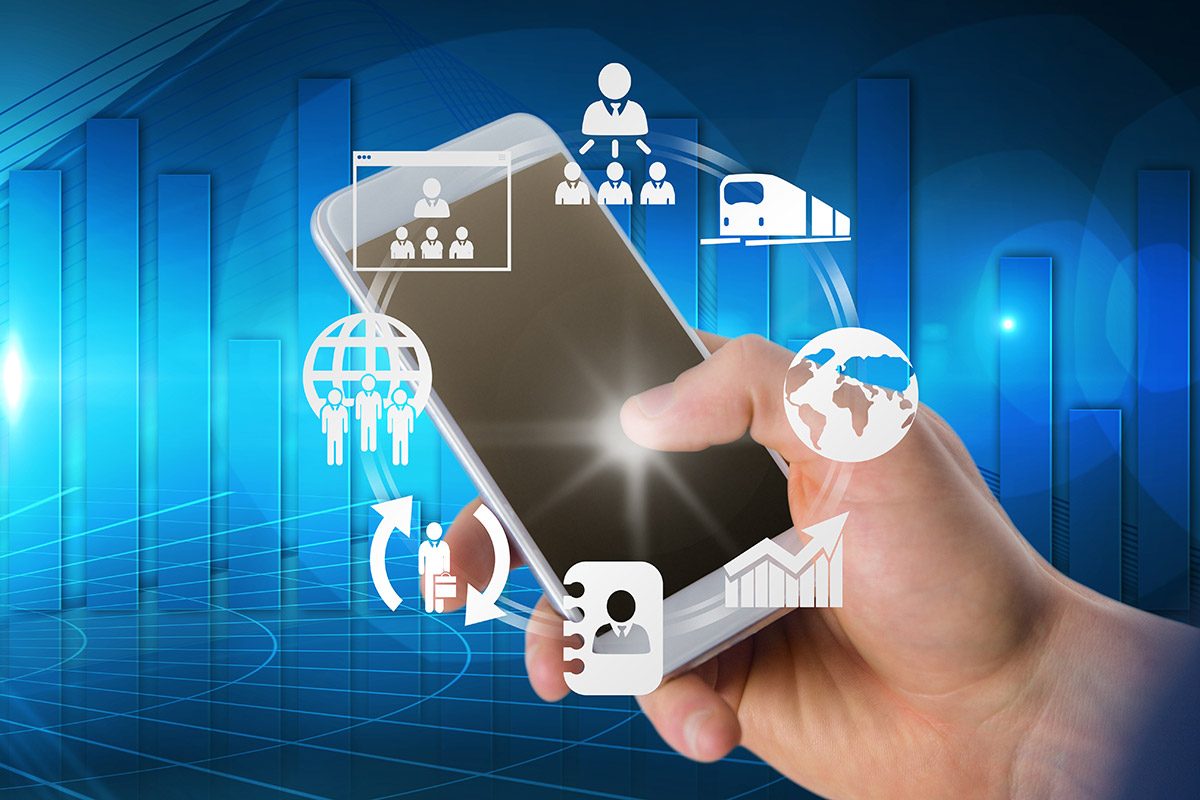Mobile app development is one of those businesses where everyone wants a piece of the action. Its exponential expansion over the last decade demonstrates its profitability.
Will it, however, continue to be a profitable business in the future? What the future holds for mobile app development? Keep reading to find out.
There are currently 2.1 million iOS applications and 2.8 million Android applications. By the end of 2025, more than 70% of the world’s population will be using mobile devices. This means there will be billions of mobile phones and millions of apps to download.
We are surrounded by mobile applications and so many users have installed an average of 35 apps. However, because of bad design, performance concerns, or insufficient productivity, many of them are removed after the first use.
But, mobile app development is expanding. New companies are growing with new concepts and developers are creating tools to help them to build websites, mobile apps, IoT applications, On demand Applications, and much more.
In this blog, we will highlight the significance of developing mobile applications, and e-commerce websites for businesses and what new business owners can expect from the future.
Here are some upcoming trends that everyone should know:
6 Trends That Mobile App Developers Will Continue To See In The Future
1. 5G Lays The Foundation
Although the excitement surrounding fifth-generation wireless technology (5G) has been growing for more than a decade, most providers will only begin rolling out 5G services in 2021.
The emphasis of 5G is on speed. It is not simply quicker than current 4G technology; it can operate at 100 times the speed of most existing networks.
This is important because it allows users, ranging from individuals to enterprise networks, to connect with wearables, gadgets, and machines in addition to phones.
Because of its significantly faster speed, information is provided in milliseconds, decreasing latency, and giving a better user experience.
2. New Beacon Technology
Small devices that generate Bluetooth Low Energy (BLE) signals are known as Beacons. It is a new emerging technology in Web and App Development that allows enterprises and businesses to connect by using special smartphone applications.
Various industries, including museums, hospitality, healthcare facilities, and others can gain significantly from the adoption of the technology.
Beacon technology gathers time and location details from customers for depth analysis, assists improve customer purchases with special offers created for them, simple payment processing, and benefits in several other ways.
3. Cloud Services
Cloud technology is already in use by a variety of multi-million dollar businesses, such as Netflix.
The world has recognized the benefits of cloud technology, and companies are waking up to reap the benefits. Some benefits of cloud computing include lower hosting costs, increased loading capacity, streamlined corporate procedures, and other comparable procedures.
Cloud technology also deciphers several security difficulties, and with its assistance, mobile app development has become ethical, genuine, and timely. Cloud computing creates strong applications.
4. Wearables Can Perform Additional Functions
Watches, earphones, and other smart devices, as well as specific articles of clothing, are examples of wearables. Wearables can perform a variety of tasks, including voice activation for phone calls and tracking the steps taken each day.
Around one billion networked wearable gadgets are in use worldwide. The wearable technology industry was valued at around $116 billion in 2021, with major growth yet ahead. It is expected to reach $226 billion by 2026.
Consumer electronics account for the lion’s share of wearables. Nonetheless, there is growing interest in employing them for uses other than simple step counting, notably in healthcare. Other features to look for in wearables soon are smart app capabilities linked to security.
5. IoT And Big Data
Iot And Big Data are the future game changers and today, they are being discussed practically everywhere. The industry of mobile apps is no less. In the area of mobile applications, it is expected to be the next big thing.
Mobile connectivity can be expanded to a worldwide scale, and IoT can standardize processes by making them more abrupt.
It’s time for developers to start including it as a required feature. Because future investors will value such aspects highly.
6. Artificial Intelligence (AI) Will Be Here To Stay
Artificial intelligence (AI) is not a new concept in mobile app development. But, AI and machine learning are complex. Due to this, app capabilities will improve.
Algorithms, for example, can employ advanced machine learning to learn from previous learner behavior and then pull data to forecast what will happen next.
Facial and speech recognition-biometrics markers that might increase safety features are two areas where AI could stand out in future app development.
Concluding Notes
As time passes, the mobile app development market improves as well. This is the most technological feature that will undoubtedly advance the development of mobile applications. New technologies will emerge over time to expand possibilities and develop applications.
